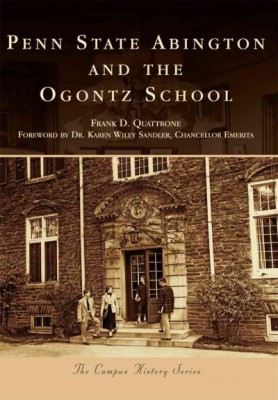| Penn State Abington and the Ogontz School Contributor(s): Quattrone, Frank D. (Author), Sandler, Karen Wiley (Foreword by) |
|
 |
ISBN: 1467117420 ISBN-13: 9781467117425 Publisher: Arcadia Publishing (SC) OUR PRICE: $22.49 Product Type: Paperback - Other Formats Published: September 2016 |
| Additional Information |
| BISAC Categories: - History | United States - State & Local - Middle Atlantic (dc, De, Md, Nj, Ny, Pa) - Education | Organizations & Institutions - Education | History |
| LCCN: 2016936298 |
| Series: Campus History |
| Physical Information: 0.2" H x 6.4" W x 9.2" (0.60 lbs) 128 pages |
| Descriptions, Reviews, Etc. |
| Publisher Description: Anyone traversing the hilly, tree-lined paths of Penn State Abington would be hard-pressed to imagine the college in its first incarnation. Among the most diverse of Penn State University's commonwealth campuses today, the college's lineage dates to 1850 as the Chestnut Street Female Seminary in Philadelphia. This pictorial history traces its evolution from a private finishing school for affluent girls to an affordable public college that draws students from 17 states and 29 countries. Among the celebrated figures who contributed handsomely to the school's prestige and growth are Civil War financier Jay Cooke, who transformed his suburban Ogontz mansion into the renamed Ogontz School for Young Ladies; Abby A. Sutherland, the school's most influential principal/president, who astutely moved the school to a handsome tract of land in Abington Township, which she donated to Penn State University in 1950; and famed aviator Amelia Earhart. In the past two decades, under the direction of Dr. Karen Wiley Sandler, chancellor emerita, the college has become the thriving degree-granting residential institution that it is today. |
Contributor Bio(s): Sandler, Dr Karen Wiley: - Chancellor EmeritaQuattrone, Frank D.: - Professor Frank D. Quattrone, communications specialist for the college's University Relations Department, culled the images for this book primarily from the thousands he reviewed in the college's extensive archives. |